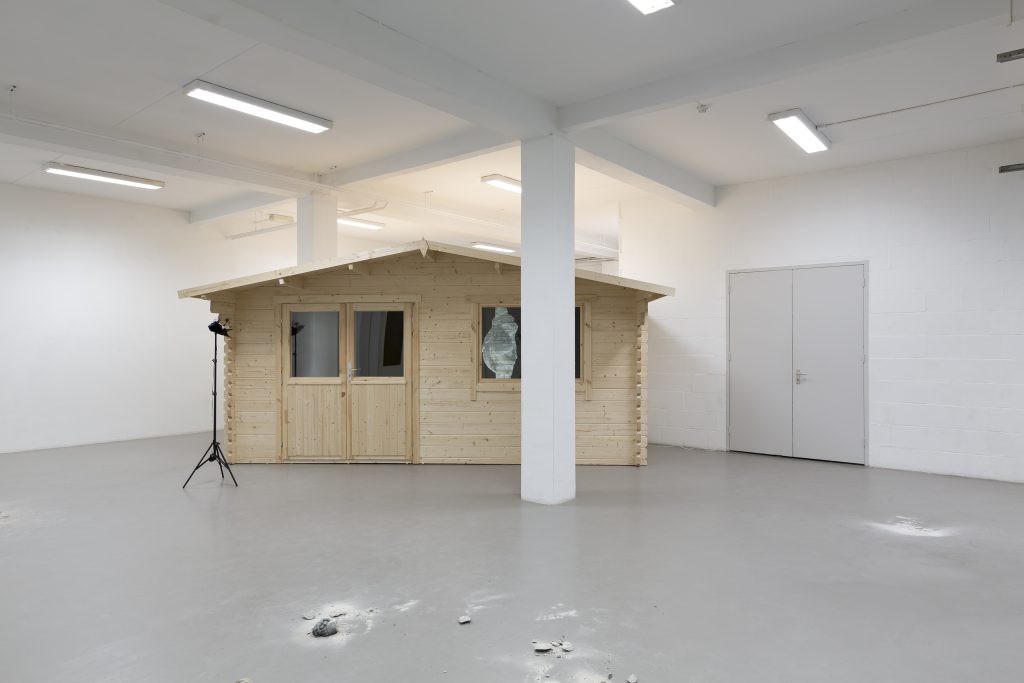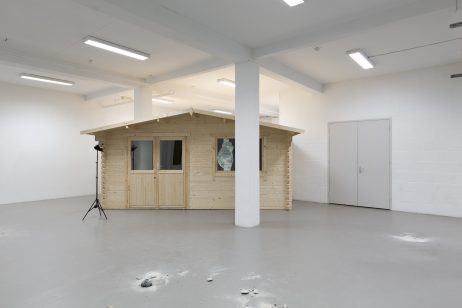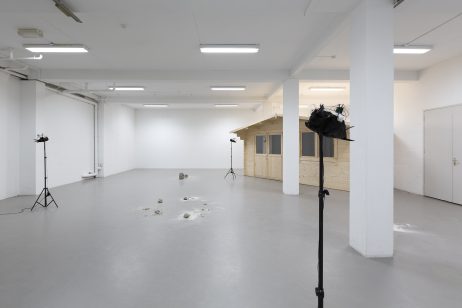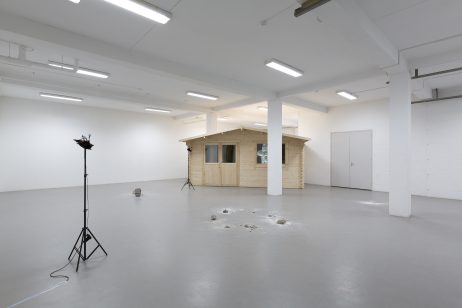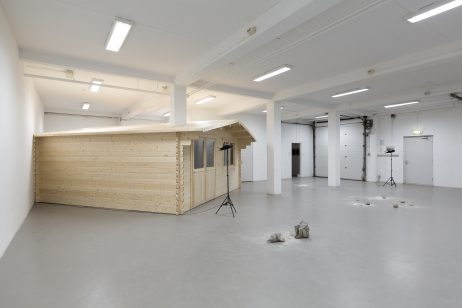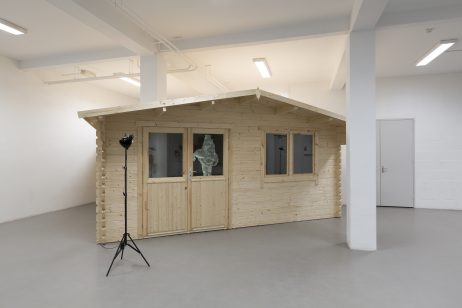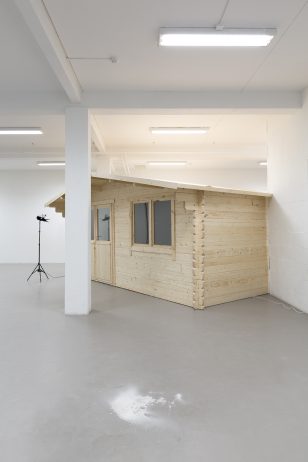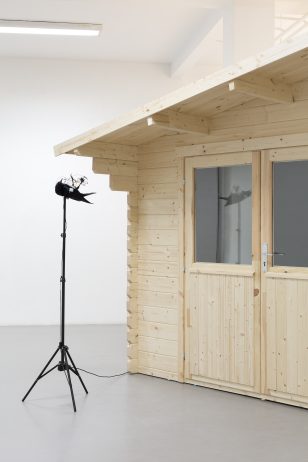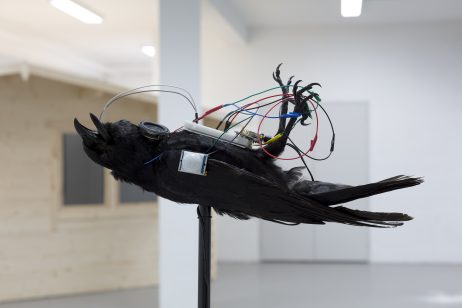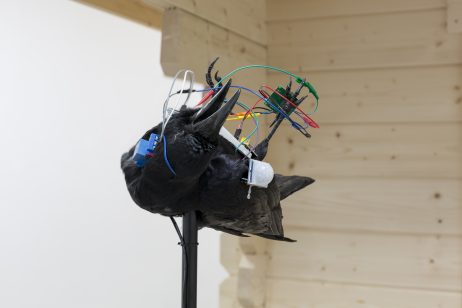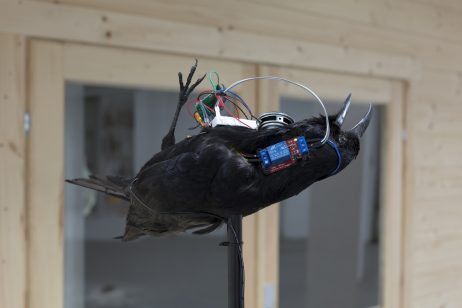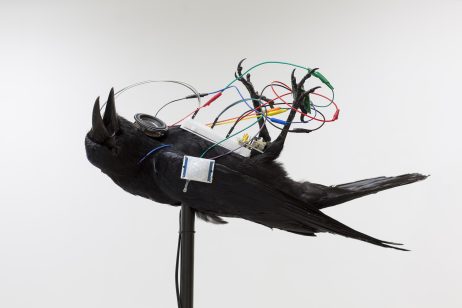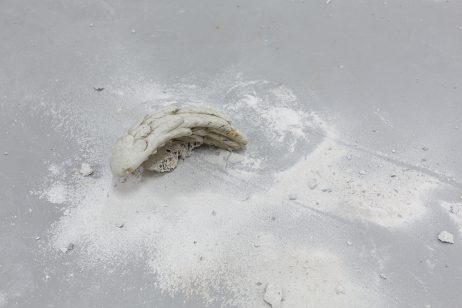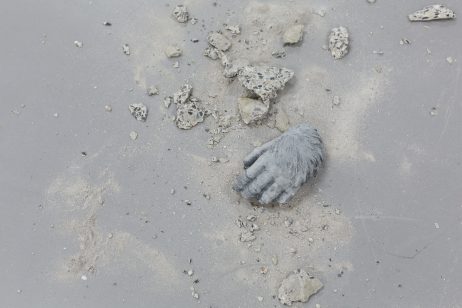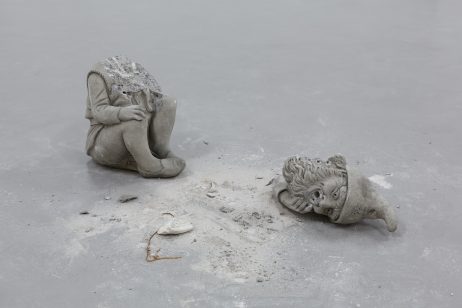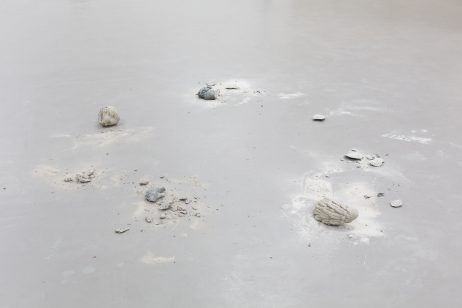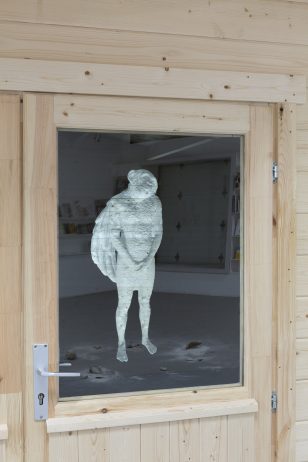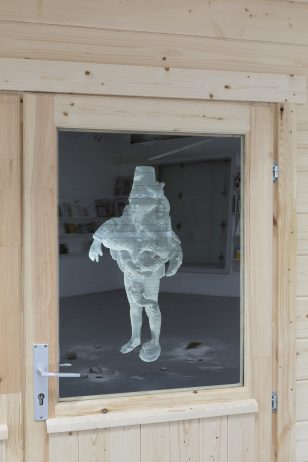1.
The garden of Koen Kloosterhuis’s father is a place that no longer exists, or only in his mind’s eye, where it lives on as a fictionalised memory as well as a place of fiction that can be altered at will. As part of the surroundings where one grows up, the garden is a world on a reduced scale and a default setting to which one relates all other things.
The garden is also a place in between the private and the public, or rather: the most private of outdoor spaces. As such it is a contradictory domain – in the case of this specific garden a domain that was inhabited by a collection of historical, mythological and animal figures that had no apparent reason to be there other than in their capacity of a seemingly accidental assembly of garden statues. This gathering remains a mystery to which there’s no conclusive solution to be made and therefore it is also a question that, for Kloosterhuis, precedes artistic production – born from the wish to make sense out of what wasn’t evident and to (re)connect these entities with each other and their now lost context. For Kloosterhuis this is the reason takes this particular garden as a starting point for his sculptural installation at P/////AKT.
2.
Artistic production thus becomes a means to bridge unbridgeable distances and to create unity from what appears to be random. To finish this process of putting things together and to realise a finished work eventually also leads to the artist’s own eviction from the work, which remains inanimate and ‘unfulfilled’. Kloosterhuis’s attempt to piece together the remnants of the lost garden statues and to bring the into the present as a presence (into a new eloquent and inhabited body) has a Frankensteinian twist to it, but is also reminiscent of other creatures that exist in popular culture and mythology. The statues themselves not only come from a lost world but also from the domain of kitsch, which is in itself a hollowed out form of visual culture – a reduction of something that once was extremely meaningful to something meaningless, of something functional or ritual to decoration (in terms of Vilém Flusser a spectacle or apparatus that leads to absence and death). In order to create a living, inhabited sculpture, the maker should therefore somehow attempt to embody it with his own living matter and get it to speak about its (changed) role and context.
Three reanimated crows, inspired by their plastic lookalikes placed in gardens to scare away pigeons, and animatronics found in haunted house rides, ‘greet’ the visitor as they cross the threshold and wander through the exhibition space; turning them into an intruder. Within the space, the crows create a domain of privacy and secrecy that is inherent to most backyards. The electronics, attached on the outside of the birds instead of being concealed within, function as external organs meant to force the stuffed crows to speak. It is a single voice, belonging to one crow, that echoes its way through the second and has almost disappeared by the time it reaches the third.
Scattered across the floor lie chunks of concrete. A wing, a head, a hand, an elephant’s trunk; the remains of a carefully dissected gathering of garden statues, originally collected by my father. Fragments of bodies that are endlessly reproducible. Clones and copies not bound to time or space—reduced to decoration, degraded to kitsch.
Strands of spaghetti covered in red sauce have fallen on top of the debris. We once had a neighbor that would feed his leftover spaghetti to the crows living near our street. In the sky, the birds would fight each other over the bloody scraps, sometimes accidentally dropping them into my father’s backyard, marking the concrete tiles and stone statues with yellow strings and splashes of red.
Backed into the corner, slightly elevated from the floor, stands the untreated and vulnerable garden house that, instead of providing a solution to survive in an inhospitable environment—like its predecessor the log cabin—has become a place associated with leisure, relaxation and daydreaming. A sanctuary from the outside world placed on the edge of the domestic sphere; a room at the end of the garden.
Spaghetti Rain marks the second episode of Turning to Dust and Bones, a series of solo exhibitions by six artists that is loosely evolving with the mind, memory and a sense of being uprooted.
The Artist’s Library
The Artist’s Library is a growing collection of titles that have, in one way or another, been relevant to the project or the artist’s practice in general. They will be on view during the exhibition and afterwards become part of the P/////AKTSALON collection of books. Koen Kloosterhuis highly recommends: – Julia Kristeva, Powers of Horror, An Essay on Abjection, 1982 – Vilém Flusser, ‘Habit: The True Aesthetic Criterion’, in Writings, 2004

